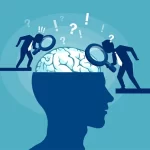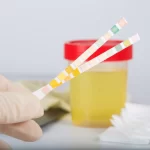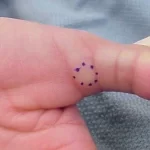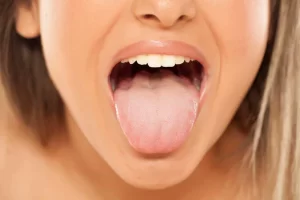Types of dry eye
There are different types of dry eye that it is important to determine through a thorough ophthalmological examination correctly and specific diagnostic tests since an individualized orientation and, with it, a tailored and effective treatment will depend on an expert examination.
Aqueous deficiency: decreased tear production, generally of the aqueous component. The most severe cases are associated with Sjögren's syndrome.
Evaporative: rapid evaporation of the tear. It is the most frequent reason, caused mainly by the dysfunction of the meibomian glands.
Inflammatory: clinical or subclinical inflammation that is present in most patients with dry eye.
Neurotrophic: deficit in the innervation of the cornea, which limits tear secretion and regeneration of the ocular surface. Neuropathic: alteration in the innervation of the cornea whose cause and mechanism are still unknown and characterized by great intensity of symptoms with an ocular examination within normality or with minimal alterations.How can it be prevented?
The early detection of dry eye, through normal controls at the ophthalmologist (especially in case of having any of the risk factors), is important to act early on its symptoms and avoid the consequences that the disease can bring.
Once diagnosed, it is also advisable to carry out periodic reviews and the visits indicated by the specialist to apply the appropriate treatments. Likewise, the patient must adopt a preventive attitude to keep a dry eye at bay, following some key recommendations that we detail below to minimize the impact of dry eye on visual health and quality of life:
Eyelid hygiene
Good eyelid hygiene is important to remove excess bacteria and fat from the edges of the eyelids, which can impair tear quality.
Follow these three steps to get good results:
Apply heat to the eyelids with warm compresses, with the eyes closed for 5 minutes.
Massage the eyelids, making vertical movements towards the eyelid edge (near the lashes). In this way, the escape of bacteria and fat is facilitated.
Clean the edge of the eyelids with a soap solution applied to the root of the eyelashes or use specific wipes for eyelid hygiene.Contact lenses
Contact lens wearers should take extreme precautions to avoid dry eyes. A first step is to consult with specialists about the most suitable type of contact lenses in each case, without forgetting to use them correctly (do not put them on the right when waking up, do not sleep or bathe with them, do not exceed the wearing time …) and carry out proper maintenance with the indicated products and always keeping them moist.
Environmental measures
Environmental measures also play a role in the challenge of keeping a dry eye at bay. Above all, it is advisable to:
Avoid heating and air conditioning
Use humidifiers
Protect the eyes with glasses that incorporate suitable sun filters
Protect eyes in polluted or dusty environments
Moisturize eyes with preservative-free artificial tearsHabits
Some habits are especially harmful to patients with this syndrome, and that should be avoided, such as rubbing the eyes, a habitual gesture of reaction to itching, eye fatigue, or the sensation of a foreign body that, carried out repeatedly, can weaken the cornea and generate the risk of developing keratoconus.
On the contrary, it is advisable to adopt other beneficial habits for eye health, such as taking visual breaks every 20 minutes when carrying out activities in which close vision predominates (reading, working with the computer, consulting the mobile…). In these situations, blinking decreases up to 30%, and, consequently, the tear evaporates faster, and the eye becomes dry.
Omega 3 fatty acid supplements
The consumption of food supplements rich in Omega3 fatty acids in high doses helps to improve tear quality and has an anti-inflammatory effect, which can be very beneficial considering that most patients with dry eye have inflammation of the ocular surface.
Dry eye prevention
Before we get to treatment, we can do things to avoid the appearance of dry eye symptoms. We share these tips to improve the quality of your tear and prevent its evaporation:
Diet
Recent studies affirm that diets low in omega-3 and antioxidants but rich in omega-6 produce oxidative stress that can affect the meibomian glands, the cornea, and the conjunctiva.
Therefore, it is advisable to add omega-3 fatty acids, present in foods such as oily fish (salmon, sardines, tuna, mackerel, or trout), as well as shellfish, such as crab, prawns, or mussels. Plant foods such as flax seeds or chia seeds are also recommended, as well as dried fruits such as walnuts and especially drinking plenty of fluids.
Atmosphere
We must try to avoid dry environments, drafts, tobacco smoke, and air conditioning as they favor the evaporation of tears. It is advisable to use a humidifier in winter and, in the case of dry environments, sunglasses with evolving shapes every month of the year as a protective camera.
Blink frequency and lid hygiene
We can try to blink more frequently to do our eyelid cleaning by massaging with eyelid hygiene wipes until the birth of the eyelashes (where the meibomian glands are) with hot compresses.
Use of artificial tear
We must use artificial tears regularly, even before having symptoms, if we belong to the population at risk (female, over 45 years of age, computer user, contact lens user, refractive surgery operated …)
Computer habits
In addition to increasing the blink rate, take a break from your computer screen every so often. An interesting trick is to change your gaze from time to time (when you change your position, the eye blinks reflexively).
And nothing more for today. Remember that the best prevention of dry eye syndrome is regular visits with your ophthalmologist. What are the most common symptoms?
The most common symptoms of dry eye are:
Eye dryness
Red-eye
Foreign body sensation
Itching/stinging
Eye fatigue
Irritation
Tearing
Photophobia (abnormal intolerance or excessive annoyance by light)
Fluctuating visionSome cases of dry eye, such as the neuropathic type, have many symptoms, although the eye examination is not very altered.
The diagnosis of the disease is based on the patient’s symptoms supported by the data that provide diagnostic tests that measure the concentration, quantity, and quality of the tear and the state of the meibomian glands (where the lipids it contains are produced ).

















Add Comment